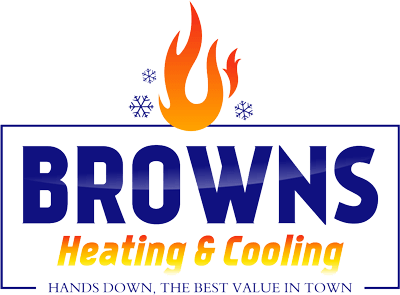Indoor air quality is a crucial aspect of maintaining a healthy living environment and integrating ultraviolet (UV) light technology into heating, ventilation, and air conditioning (HVAC) systems can significantly improve air quality by eliminating bacteria, mold, and other pollutants.
This article provides a comprehensive guide on how to size UV light for HVAC to ensure optimal efficiency and effectiveness in maintaining a clean and healthy indoor atmosphere.
Understanding the Benefits of UV Light in HVAC Systems
Before delving into the process of sizing UV lights for HVAC systems, it’s essential to understand the benefits of integrating this technology. UV light has been proven effective in:
1. Eliminating Pathogens:
UV light can destroy bacteria, viruses, and mold, reducing the risk of illness and allergies.
2. Improving Air Quality:
By reducing pollutants, UV light enhances indoor air quality and creates a healthier environment.
3. Enhancing HVAC Efficiency:
UV light reduces the buildup of organic matter on HVAC components, which can improve system performance and extend its lifespan.
Key Factors to Consider When Sizing UV Light for HVAC
There are several factors to consider when determining the appropriate size of a UV light system for your HVAC:
1. Airflow Rate:
This refers to the amount of air your HVAC system can process in a given time, typically measured in cubic feet per minute (CFM). A higher airflow rate requires a larger UV light system to effectively treat the air.
2. Duct Size and Shape:
The dimensions and design of your HVAC ductwork will influence the amount of UV light exposure necessary to properly disinfect the air.
3. UV Light Intensity:
This is measured in microwatts per square centimeter (μW/cm²) and is a crucial factor in determining the effectiveness of the UV system.
4. Type of HVAC System:
Whether you have a central air system, a mini-split system, or a forced air system, the type of HVAC system in your home will affect the size and placement of the UV light system.
Calculating the Appropriate UV Light Size for Your HVAC System
To determine the right size of UV light for your HVAC system, follow these steps:
1. Determine the Airflow Rate
Check the manufacturer’s specifications for your HVAC system to find the airflow rate. If this information is not readily available, you may need to consult an HVAC professional for assistance.
2. Calculate the Required UV Light Intensity
As a general rule, a UV light system should provide a minimum of 12,000 μW/cm² of intensity per 1,000 CFM of airflow. To calculate the required intensity for your HVAC system, multiply your airflow rate by 12.
For example, if your system has an airflow rate of 2,000 CFM, you will need a UV light system with an intensity of at least 24,000 μW/cm² (2,000 CFM x 12).
3. Select the Right UV Light System
Based on the calculated UV light intensity, choose a UV light system with the appropriate specifications. Make sure to select a system from a reputable manufacturer to ensure high-quality performance.
Expert Tips for Installing and Maintaining Your UV Light System
Proper installation and maintenance of your UV light system are crucial for optimal performance and efficiency. Keep these expert tips in mind:
1. Professional Installation:
It’s essential to have your UV light system installed by a qualified HVAC professional to ensure it is correctly sized and positioned for maximum effectiveness.
2. Placement in the HVAC System:
The UV light system should be installed downstream of the air filter and cooling coils, allowing for optimal exposure to the air passing through the system. This placement also prevents the buildup of organic matter on the coils, improving overall system efficiency.
3. Regular Maintenance:
UV light bulbs have a limited lifespan, typically lasting around 9,000 to 12,000 hours or approximately one year of continuous use. Regularly replace the bulbs to maintain the system’s effectiveness. Keep in mind that the intensity of the UV light decreases over time, so it’s essential to monitor the system and replace the bulbs as needed.
4. Safety Precautions:
UV light can be harmful to the eyes and skin, so exercise caution when working near an active UV light system. Always turn off the system before performing maintenance or replacing bulbs.
5. Monitor System Performance:
Routinely inspect your HVAC system, including the UV light system, to ensure it is functioning correctly and efficiently. Regular maintenance can help detect potential issues before they become significant problems.
Conclusion: Making an Informed Decision for Your Home
Sizing a UV light system for your HVAC can greatly enhance the indoor air quality of your home while improving the overall efficiency of your heating and cooling system.
By considering the airflow rate, duct size, and shape, UV light intensity, and type of HVAC system, you can confidently select and install the right UV light system for your specific needs.
Remember to consult a professional HVAC technician for assistance in determining the appropriate size of the UV light system and ensuring proper installation.
By investing in a properly sized and maintained UV light system, you’ll be taking a significant step toward creating a healthier and more comfortable living environment for you and your family.
Frequently Asked Questions (FAQs):
How do I determine the correct UV light intensity for my HVAC system?
To calculate the required UV light intensity for your HVAC system, multiply your airflow rate (in cubic feet per minute or CFM) by 12. This will give you the minimum UV light intensity needed in microwatts per square centimeter (μW/cm²) for your system. For example, if your HVAC system has an airflow rate of 2,000 CFM, you will need a UV light system with an intensity of at least 24,000 μW/cm² (2,000 CFM x 12).
Can UV lights be used in all types of HVAC systems?
Yes, UV lights can be integrated into various types of HVAC systems, including central air systems, mini-split systems, and forced air systems. However, the size and placement of the UV light system may vary depending on the specific type of HVAC system you have. It’s essential to consult with an HVAC professional to determine the best UV light solution for your unique setup.
How often should I replace the bulbs in my UV light system?
UV light bulbs typically have a lifespan of around 9,000 to 12,000 hours or approximately one year of continuous use. However, the intensity of the UV light decreases over time, so it’s crucial to monitor the system and replace the bulbs as needed to maintain optimal performance. Regular maintenance of your HVAC system, including the UV light system, can help detect potential issues before they become significant problems.
What safety precautions should I take when working with a UV light system in my HVAC?
UV light can be harmful to the eyes and skin, so it’s essential to exercise caution when working near an active UV light system. Always turn off the system before performing maintenance or replacing bulbs. It’s also a good idea to wear protective eyewear and gloves when handling UV bulbs to avoid potential injury.
How can I ensure that my UV light system is working effectively in my HVAC system?
To ensure the effectiveness of your UV light system, follow these guidelines:
- Have your UV light system installed by a qualified HVAC professional to guarantee correct sizing and positioning.
- Place the UV light system downstream of the air filter and cooling coils for optimal exposure to the air passing through the system.
- Regularly inspect your HVAC system, including the UV light system, to ensure it is functioning correctly and efficiently.
- Replace the UV light bulbs as needed, typically around once a year, to maintain the system’s effectiveness.
- Consult an HVAC professional for regular system maintenance and inspections to detect potential issues and maintain optimal performance.
Ramod Brown, the founder of Browns Heating & Cooling, brings a wealth of HVAC experience to Chicago and its neighboring areas. With deep expertise in heating and cooling services, he simplifies complex HVAC concepts through his insightful blog posts. Whether you’re seeking ways to enhance HVAC efficiency, troubleshoot issues, or stay informed about the latest trends, the Browns Heating & Cooling blog is your go-to resource for practical insights that will help you maintain a comfortable and efficient environment for your space.

